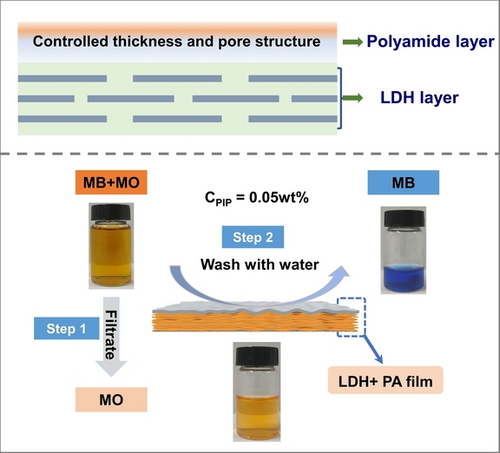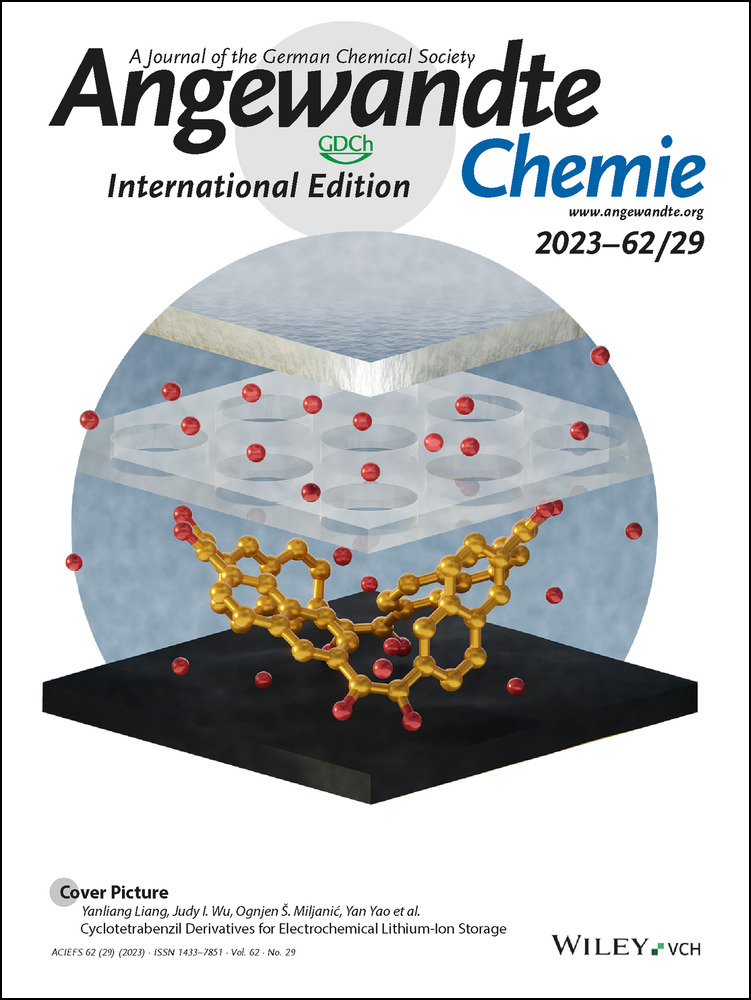Two-Dimensional LDH Film Templating for Controlled Preparation and Performance Enhancement of Polyamide Nanofiltration Membranes
Graphical Abstract
The layered double hydroxides (LDH) intermediate layer facilitates controlled interfacial polymerization between trimesoyl chloride and piperazine, which results in two membranes with good separation performances towards salts and dyes. Due to the low water transport resistance of the LDH layer and the thinner polyamide layer, the composite membrane has a larger flux, which is a breakthrough in the trade-off between permeance and selectivity.
Abstract
Tailored design of high-performance nanofiltration membranes that can be used in a variety of applications such as water desalination, resource recovery, and sewage treatment is desirable. Herein, we describe the use of layered double hydroxides (LDH) intermediate layer to control the interfacial polymerization between trimesoyl chloride (TMC) and piperazine (PIP) for the preparation of polyamide (PA) membrane. The dense surface of LDH layer and its unique mass transfer behavior influence the diffusion of PIP, and the supporting role of the LDH layer allows the formation of ultrathin PA membranes. By only changing the concentration of PIP, a series of membranes with controllable thickness from 10 to 50 nm and tunable crosslinking-degree can be prepared. The membrane prepared with a higher concentration of PIP shows excellent performance for divalent salt retention with water permeance of 28 Lm−2 h−1 bar−1, high rejection of 95.1 % for MgCl2 and 97.1 % for Na2SO4. While the membrane obtained with a lower concentration of PIP can sieve dye molecules of different sizes with a flux of up to 70 Lm−2 h−1 bar−1. This work demonstrates a novel strategy for the controllable preparation of high-performance nanofiltration membranes and provides new insights into how the intermediate layer affects the IP reaction and the final separation performance.
Open Research
Data Availability Statement
The data that support the findings of this study are available from the corresponding author upon reasonable request.





